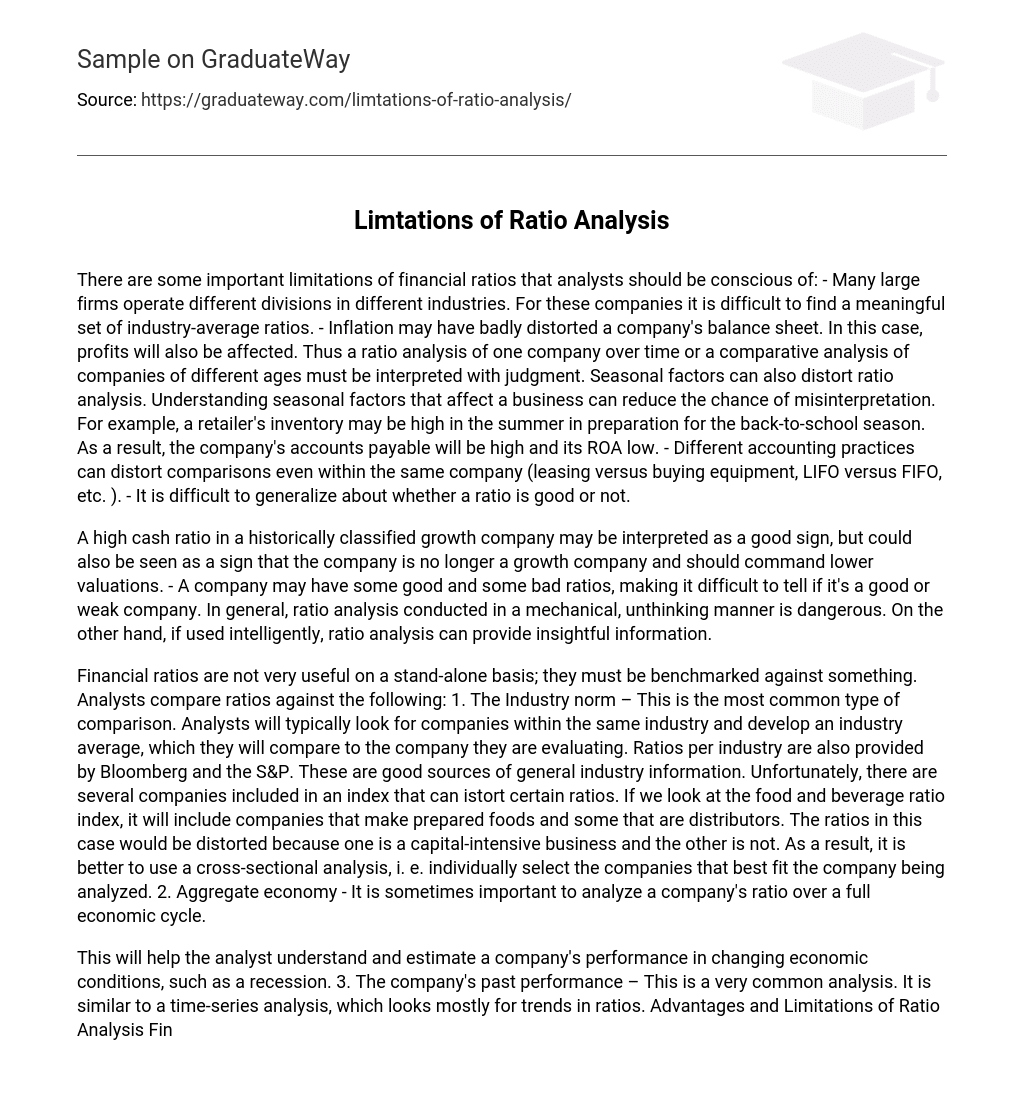Analysts should be aware of several important limitations regarding financial ratios. Firstly, it can be difficult to find meaningful industry-average ratios for large companies that operate divisions in different industries. Secondly, inflation can have a significant impact on a company’s balance sheet and profits, leading to distortion. Therefore, when conducting ratio analysis for a single company over time or comparing companies of different ages, it is crucial to interpret the results carefully.
Additionally, seasonal factors can also distort ratio analysis. It is essential to understand the seasonal factors that affect a business to avoid misunderstanding. For example, a retailer may have high inventory during the summer in anticipation of the back-to-school season. This can result in high accounts payable and a low return on assets (ROA).
Furthermore, even within the same company, comparisons can be distorted due to different accounting practices such as leasing versus buying equipment or using LIFO versus FIFO methods.
Lastly, making generalizations about whether a ratio is considered good or not is challenging.
Having a high cash ratio in a growth company could have two interpretations. It could be considered positive, indicating a good sign. Alternatively, it might suggest that the company is no longer a growth company and therefore should have lower valuations. This implies that a company can have both favorable and unfavorable ratios, making it challenging to determine its overall strength. In general, conducting ratio analysis mechanically and without careful consideration can be risky. However, when used intelligently, ratio analysis can offer valuable insights.
Financial ratios are more useful when compared to something else rather than being evaluated alone. Analysts often compare ratios against the industry norm, which is the most common type of comparison. They look for companies within the same industry and establish an industry average to compare with the company under evaluation. Bloomberg and the S&P also provide ratios per industry, which are reliable sources of general industry information. However, certain ratios can be distorted due to inclusion of different companies in an index. For example, the food and beverage ratio index includes both prepared food companies and distributors, leading to distorted ratios. Therefore, it is preferable to use a cross-sectional analysis by individually selecting companies that closely resemble the one being analyzed. Another comparison that can be made is against the aggregate economy, as it may be important to analyze a company’s ratio over an entire economic cycle.
This will help the analyst understand and estimate a company’s performance in changing economic conditions, such as a recession. The company’s past performance is similar to a time-series analysis, which looks mostly for trends in ratios. Financial ratio analysis is a useful tool for users of financial statements, as it simplifies the statements and allows for comparisons between companies of different sizes. It also helps with trend analysis and highlights important information quickly. However, financial ratio analysis has limitations: different companies operate in different industries with varying environmental conditions such as regulation and market structure.
The significance of such factors is so great that comparing two companies from different industries could potentially be misleading. Financial accounting information is influenced by estimates and assumptions, with accounting standards permitting various accounting policies that hinder comparability. As a result, ratio analysis becomes less useful in these scenarios. Additionally, ratio analysis elucidates connections between past data, whereas users are primarily interested in current and future information.





